To Index Home Page
To View The Images:
Click
IMAGES ONLY
Then use your mouse
with the slider on the right of this frame
to view the 40 + images.
And See All The Images:
Click
FULL TUTORIAL


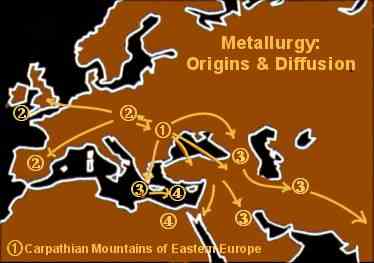
The beginning of the Bronze Age here in central Europe was also the time and place where the earliest blue(copper)steatite and quartz frit beads appeared.

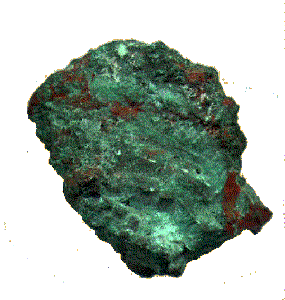
A piece of naturally found Copper(ore).

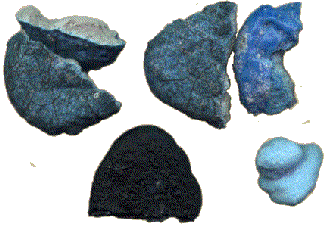
Various pieces of quartz frit paste containing different proportions of copper minerals.

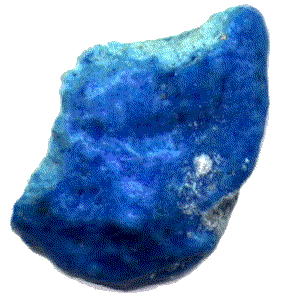
A lump of quartz frit paste

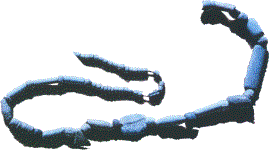
Simple quartz frit beads of various shapes strung into a necklace.

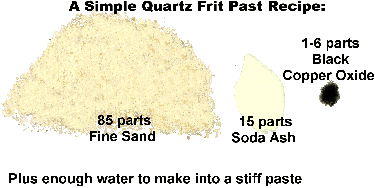

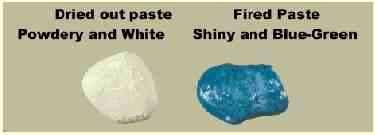
Before and after firing - Blue Quartz Frit.

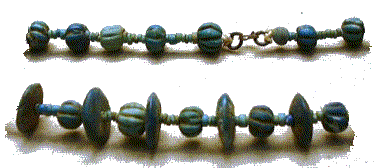
Strings of more refined blue quartz frit beads Egypt c.1500 BC.

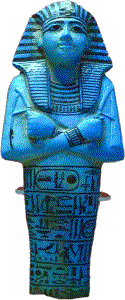
Blue Quartz Frit Ushabti figurine. Probably c.1450 BC.

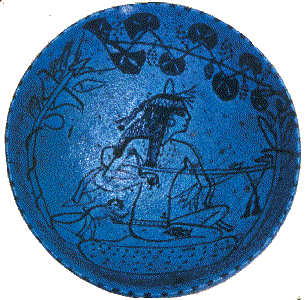
A Quartz Frit press moulded dish. Decorated with black slip drawing c.1450 BC.

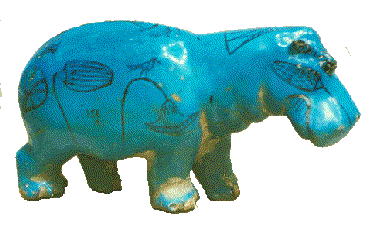
A press moulded and modelled figurine of a hippopotamus in Blue Quartz Frit Paste. Probably made about 1400 BC. in the 18th Dynasty of the New Kingdom (or Empire) period in Egypt.

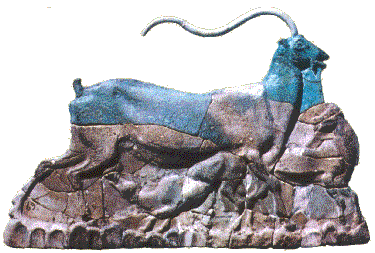
Blue Frit press moulded plaque from Knossos, Crete. c.1500 BC. A goat suckling her young.

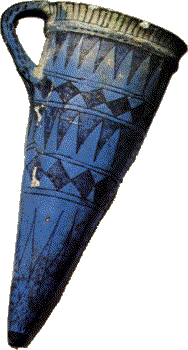
Cretan style rhyton found in Egypt.Made c.1400 BC. from blue quartz frit and decorated with black slip.

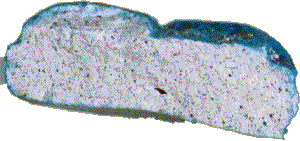
Broken piece of blue quartz frit, showing granular grey body inside with covering edge of blue glassy body on the outside.

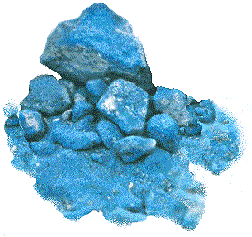
Powdered "kyanos" or "Egyptian blue" made from blue quartz frit. This example was found in an excavation site at Mycenae in Southern Greece.

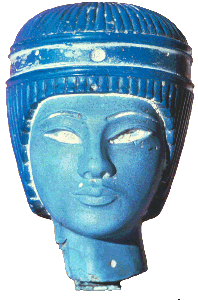
Head of Queen Nephertiti - Headdress in Blue Quartz Frit and Face and neck in Kyanos. Made in Egypt during the Amarna period c.1560 BC.

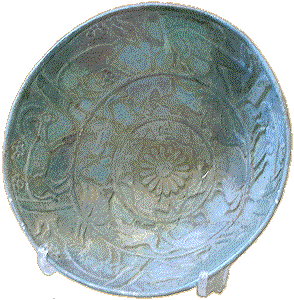
Egypt 18th Dynasty New Kingdom c. 1500 BC. Press moulded dish in Kyanos

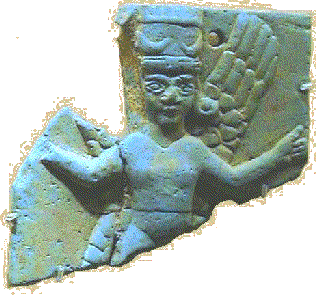
Two inch fragment of a winged figure press moulded in kyanos. From Assyria c.13th century BC.

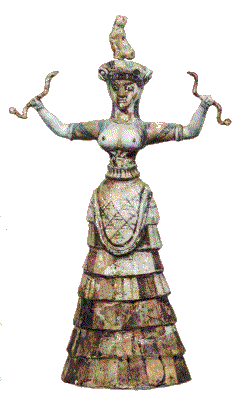
Cretan Snake Goddess figurine modelled and press moulded out of pieces of different coloured frit paste. Found at Knossos in the treasury of the temple. Made about 1500 BC.

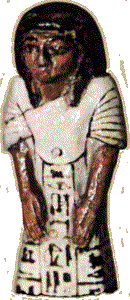
Figurine in two different colours of frit paste from the Palace of Rameses III Medinet Habu. c.1150 BC.

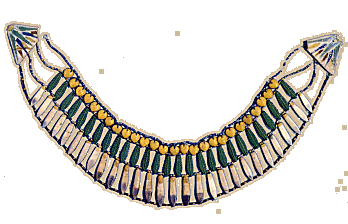
A necklace in polychrome frit paste, made during the Amarna period (1372-1362BC). Some of the finest fritware jewelry of ancient times was made during this period.

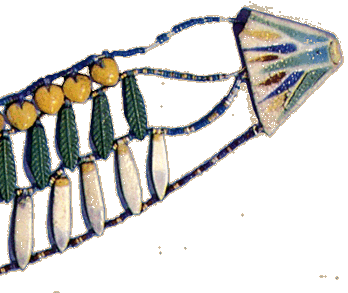
Detail of the polychrome necklace which shows more clearly the quality of the inlay technique.

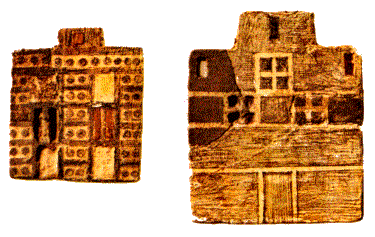
Detail of two tiny quartz frit paste plaques inlaid with coloured strips. c. 1550 BC. Knossos, Crete.

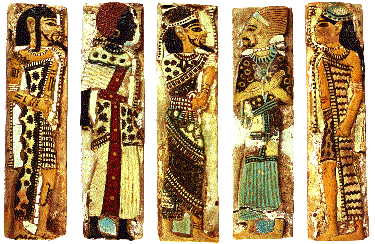
Five polychrome panels from the Palace of Ramesses III at Medinet Habu, Thebes, Egypt. c.1150 BC.

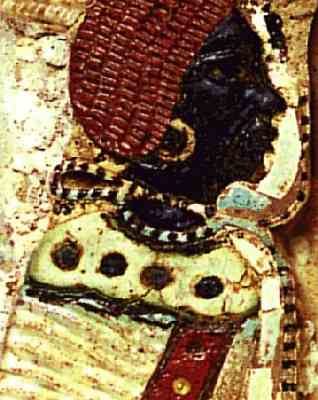
A detail of the head of an African, from one of the polychrome frit panels at Medinet Habu, Egypt.
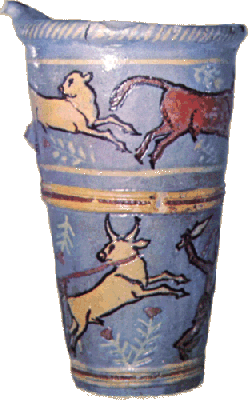
A Cretan style fritware decorated rhyton(top part). It was found at Kition in Cyprus and dated to the 13th century BC.

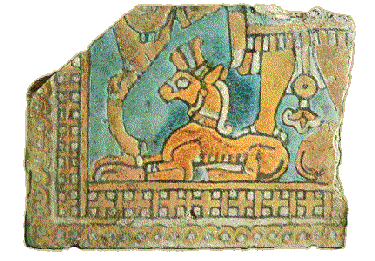
A fragment of a tile decorated with coloured glazes. From Susa, Iran. Thought to have been made in the eighth century BC.

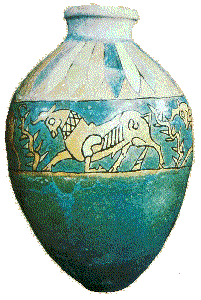
The petal and bull pot from the Ziwiye treasure in Western Iran ca. 8-7th century BC.

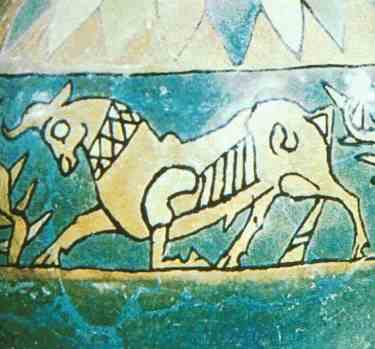
Detail of the bull - The petal and bull pot from the Ziwiye treasure in Western Iran ca. 8-7th century BC.

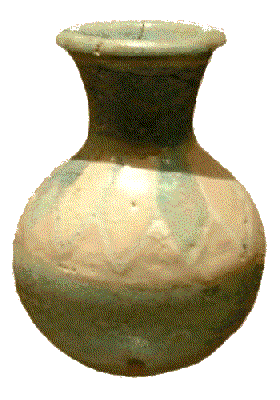
Tiny glazed pot with petal decoration of thick glazes from Western Iran ca. 8-7th century BC.

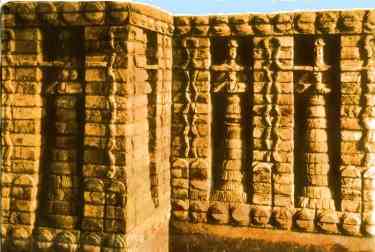
Part of a temple wall at Uruk in Mesopotamia constructed about 1450 BC. The press moulded bricks form large reliefs representing local deities.

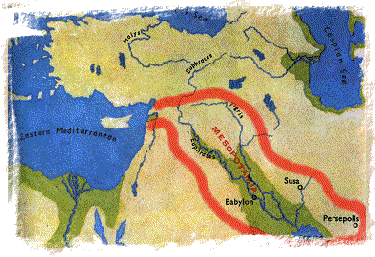
Map of important centres in Babylonia, Assyria and Persia. Also it shows that close contact was possible with Cyprus, Crete and the Aegean from the Syrian coastline.

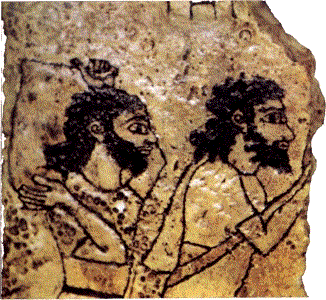
Nineveh - glazed clay brick with a complete scene in black under a glaze. c. 850 BC.

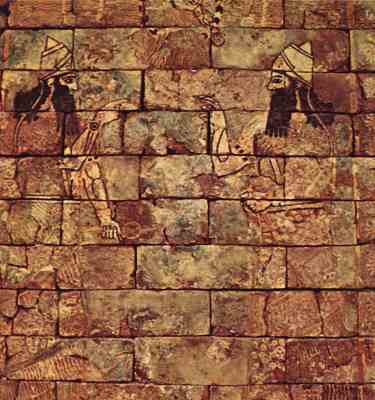
Panel of glazed clay bricks from Nineveh, Assyria c. 840 BC.

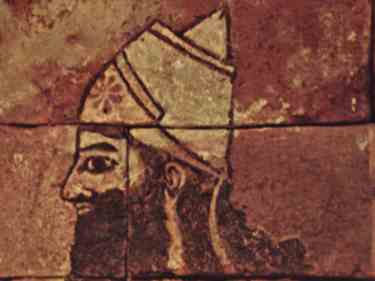
Nimrud panel -detail of head c. 840 BC.

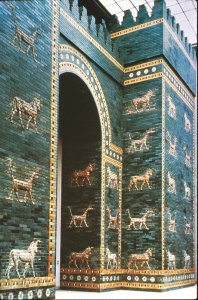
Babylon Gateway covered with moulded and glazed bricks. Built between 605 and 563 BC.

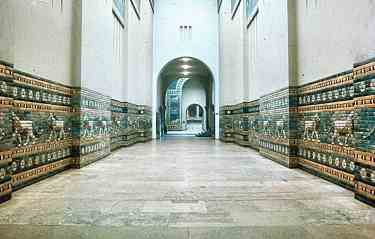
Processional Way and Gateway, covered with moulded and glazed bricks. Built between 605 and 563 BC.

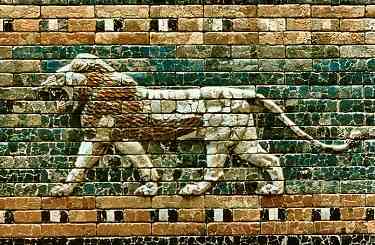
Detail of one of the lifesize lions in the moulded and glazed brick frieze lining the Processional Way. c.605-563 BC

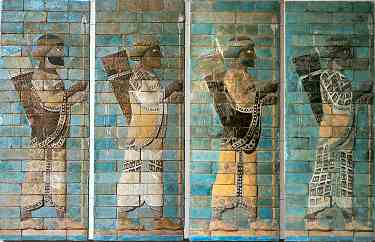
Part of a Frieze of Persian Archers from the walls of the king's audience chamber, Imperial Persian Palace, Susa, W.Iran. Completed by Artaxerxes III (reigned 359/358-338 BC)

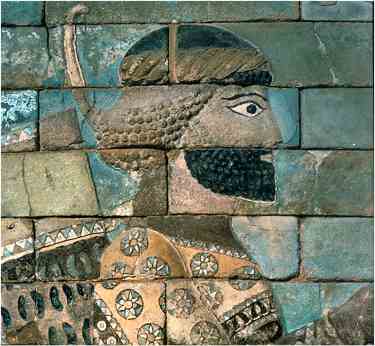
Detail of Persian Archer in moulded and glazed bricks, from the frieze of Persian Archers, Royal Palace Susa. W,Iran c.550 BC.

Susa
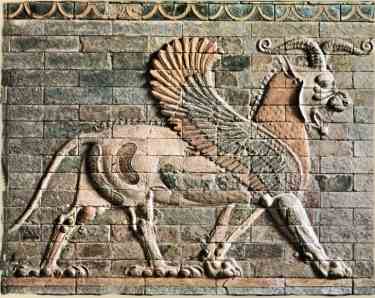
Griffon - Palace of Artaxerxes?

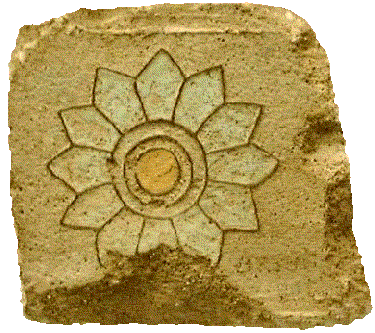
Fragment of glazed brick showing the raised lines enclosing the glaze in the petal shapes.

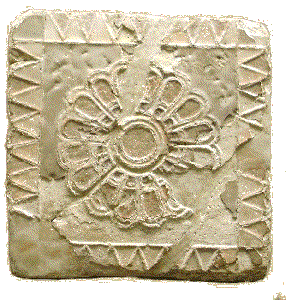
Glazed tile from Assyria. Showing the thick layer of glaze covering the raised decoration. Most of the colour has leached away.

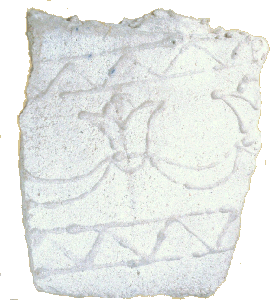
Harrow Tutorial Research Project Tile 1. A fine quartz frit body used to pipe raised lines of patterns onto a quartz frit tile.

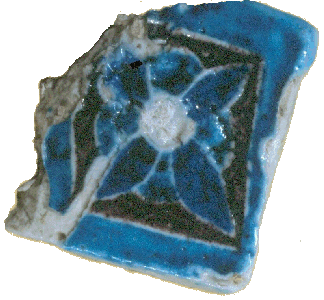
Harrow Tutorial Research Project Tile 2. Coloured glazes separated by the piped raised lines or cloisons.

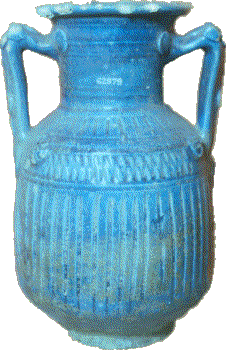
Large Ptolemaic fritware vase made in the second century BC. Alexandria, Egypt.

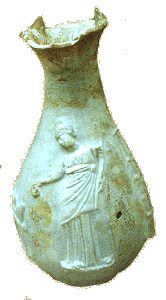
Ptolemaic Pale blue quartz frit jug with a sprigged hellenistic female figure. Made in. Alexandria, Egypt second century BC.

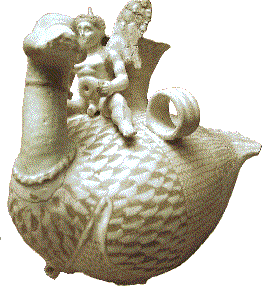
Decorative moulded/modelled fritware Jug. Winged boy on a goose. Alexandria, Egypt. 2nd century AD.

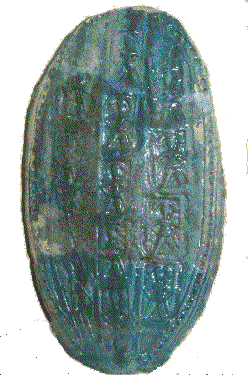
Glazed coffin lid from Parthia, 3rd century AD.

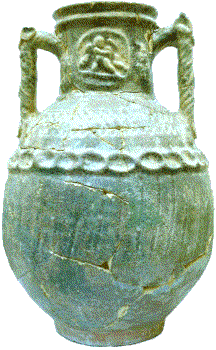
Alkaline glazed jar from Parthia, 3rd century AD.

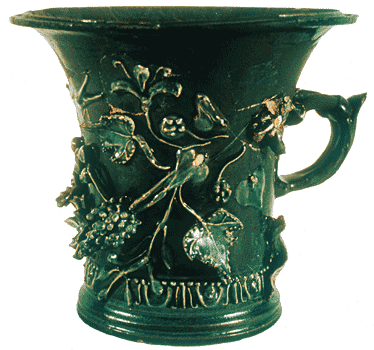
A glazed earthenware beaker with delicate applied decoration. It seems to be imitating fine and elaborately decorated glass, Found in Corinth. Dated 1st century AD.

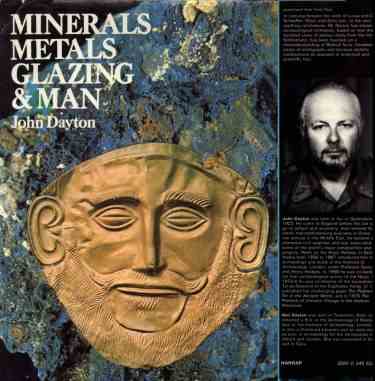
John Dayton's Book: ISBN 0 245 52807 5
This is the last illustration.
I hope you have found tutorial No.4 interesting and perhaps useful.
Tutorial No.5 is about the Ceramics of Crete and Mycenae - the ancient Aegean world before Classical Greece.

That was the last illustration in this tutorial

Last modified on 29th March 2001
©2000 Victor Bryant
To Index Home Page